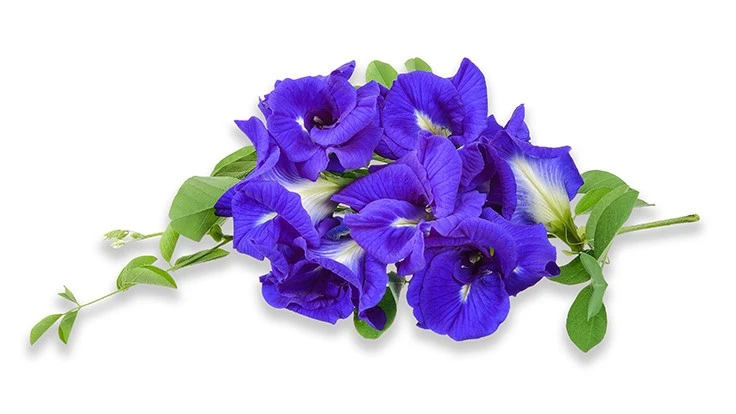
© khumthong | ADOBE STOCK
It provides a natural food coloring. It gives nurseries another ornamental to grow and sell, and it might provide health benefits to those who eat it with their food. It is the butterfly pea, and University of Florida (UF) researchers are studying the flower to see if it will grow in Florida.
Much of what we eat every day contains added color, and those blues, reds and yellows are approved by the Food and Drug Administration. But they’re synthetic, and increasingly, consumers want natural additives, UF researchers say.
“At the UF/IFAS Mid-Florida Research and Education Center, we are conducting research to position Florida nurserymen and growers to lead the industry in using edible plants and flowers as food colorants and additives,” said Brian Pearson, an assistant professor of environmental horticulture at the center. “As consumers continue to move away from synthetic and toward natural ingredients, the opportunities for Florida agriculture are endless.”
Toward the natural food-coloring goal, UF/IFAS researchers are studying the butterfly pea, a flower that’s native to Southeast Asia and is a non-native exotic plant in Florida. Additionally, the butterfly pea contains anthocyanin, one of the more common antioxidants, making it potentially beneficial to the consumer’s health, UF/IFAS researchers say.
You can read more on the University of Florida’s research into the butterfly pea on Newswise’s website.
Latest from Greenhouse Management
- Anthura acquires Bromelia assets from Corn. Bak in Netherlands
- Top 10 stories for National Poinsettia Day
- Langendoen Mechanical hosts open house to showcase new greenhouse build
- Conor Foy joins EHR's national sales team
- Pantone announces its 2026 Color of the Year
- Syngenta granted federal registration for Trefinti nematicide/fungicide in ornamental market
- A legacy of influence
- HILA 2025 video highlights: John Gaydos of Proven Winners





